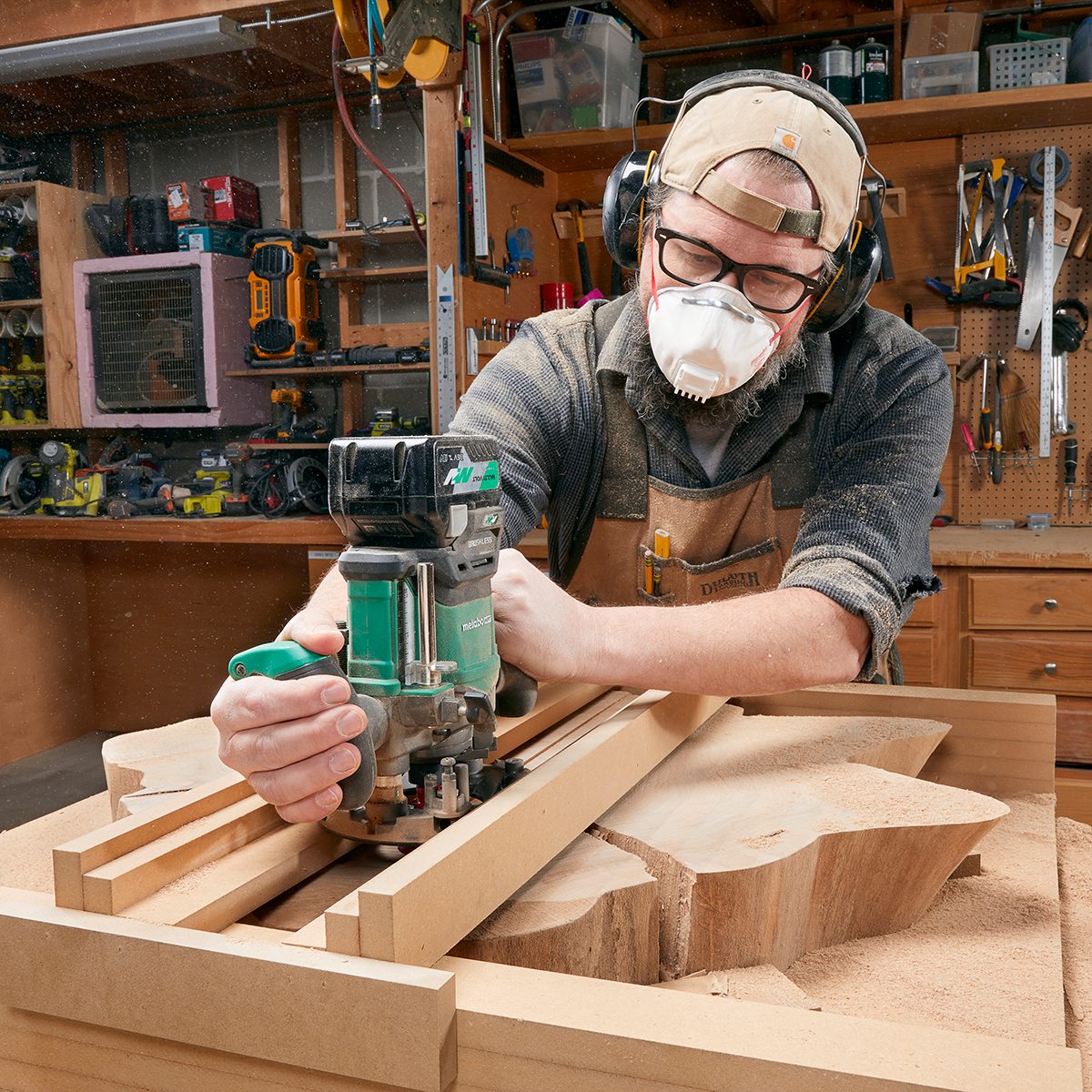Flatten big lumber without big machinery.
A half day
Beginner
$50-75
Introduction
Got large pieces of wood to plane? If you're got a router and a gantry, you're good to go.

You don’t need industrial-sized machinery to plane large pieces of wood. A full-size router with a 1/2-in. collet, a large-diameter bit and a simple jig will do the trick. The process will take a little longer than it would with a big machine, but the results will be just as good.
Figure A: Platform

Figure B: Gantry

Tools Required
- Drill/driver
- Flat bottom router bit
- Full size router with 1/2" collet
- Table or circular saw
Materials Required
- 3/4" x 48" x 96" MDF
Watch How to Plane Large Boards With a Router Gantry
Project step-by-step (6)
Bit for Planing
You’ll need a large-diameter router bit to speed the process along. If you own a wood router and a collection of bits, you might already have what you need. The bit doesn’t need to be purpose-made for planing. It just needs to cut a flat surface. I used the bit shown at left that came with a door-making kit.

Build the Platform
Start with a piece of 3/4-in. medium density fiberboard (MDF) that’s about six inches larger than your workpiece, in both length and width. Build up two rails to support the gantry using two-inch-wide strips of 3/4-in. MDF. Just stack these, tacking them in place with screws or brad nails. That lets you easily remove them as you decrease the thickness of your workpiece.
Build the Gantry
Construct the gantry as shown, using 3/4-in. MDF. Its length depends on the distance between the rails of your platform. The gantry should be just long enough to allow the overhanging keepers to slide freely along the rails.
Secure the Workpiece
Wedge shims underneath your stock to keep it from teetering while you’re routing. Use 3/4-in. MDF blocking screwed to the platform to keep the stock from sliding.

Flatten the Workpiece
Set your router’s depth to remove 1/8- to 1/4-in. of material. Slide the router through the gantry. Then move the gantry over a distance slightly less than the diameter of your bit and slide the router through the gantry again. This first pass may only remove a few high spots.
After cutting everything to that depth, lower the bit another 1/8-in. to 1/4-in. and proceed as above until the whole side is flattened. Then flip the workpiece over and repeat on the other side.
I couldn’t get enough depth for cutting with my router’s dust port attached, so I had to go without. This is really dusty work, so wear a mask!

Finish Your Project
After flattening, sand your project and apply the finish. I attached hairpin legs to turn this crosscut into a coffee table.






















